LITE ON TECHNOLOGY WN4502B 802.11 a/b/g/n MODULE User Manual
LITE-ON Technology Corp. 802.11 a/b/g/n MODULE Users Manual
Users Manual

Kaysa Lee Page 1 3/17/2011
8
80
02
2.
.1
11
1
a
a/
/b
b/
/g
g/
/n
n,
,
2
2.
.4
4G
G/
/5
5G
G
2
2T
T2
2R
R
W
Wi
ir
re
el
le
es
ss
s
U
US
SB
B
M
Mo
od
du
ul
le
e
W
WN
N4
45
50
02
2B
B
U
Us
se
er
r’
’s
s
M
Ma
an
nu
ua
al
l

Kaysa Lee Page 2 3/17/2011
REGULATORY STATEMENTS
FCC Certification
The United States Federal Communication Commission (FCC) and the Canadian
Department of Communications have established certain rules governing the use of
electronic equipment.
Part15, Class B
This device complies with Part 15 of FCC rules. Operation is subject to the
following two conditions:
1) This device may not cause harmful interference, and
2) This device must accept any interference received, including interference
that may cause undesired operation. This equipment has been tested and found to
comply with the limits for a Class B digital device, pursuant to Part15 of the FCC
Rules. These limits are designed to provide reasonable protection against harmful
interference in a residential installation. This equipment generates uses and can radiate
radio frequency energy, and if not installed and used in accordance with the instructions,
may cause harmful interference to radio communications. However, there is no guarantee
that interference will not occur in a particular installation. If this equipment does cause
harmful interference to radio or television reception, which can be determined by turning
off and on, the user is encouraged to try to correct the interference by one or more of the
following measures:
• Reorient or relocate the receiving antenna.
• Increase the separation between the equipment and receiver.
• Connect the equipment into an outlet on a circuit different from that to which the
receiver is connected.
• Consult the dealer or an experienced radio/TV technician for help.
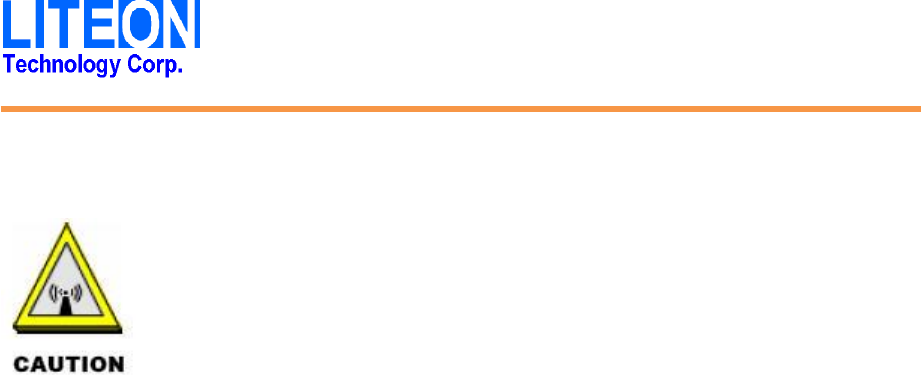
Kaysa Lee Page 3 3/17/2011
Warning: Changes or modifications to this unit not expressly approved by
the party responsible for compliance could void the user authority to operate
the equipment.
1. This Transmitter must not be co-located or operating in conjunction with
any other antenna or transmitter.
2. For product available in the USA market, only channel 1~11 can be
operated. Selection of other channels is not possible.
IMPORTANT NOTE:
This module is intended for OEM integrator. The OEM integrator is still responsible
for the FCC compliance requirement of the end product, which integrates this module.
20cm minimum distance has to be able to be maintained between the antenna and the
users for the host this module is integrated into. Under such configuration, the FCC
radiation exposure limits set forth for an population/uncontrolled environment can be
satisfied.
Any changes or modifications not expressly approved by the manufacturer
could void the user's authority to operate this equipment.
USERS MANUAL OF THE END PRODUCT:
In the users manual of the end product, the end user has to be informed to keep at least
20cm separation with the antenna while this end product is installed and operated. The
end user has to be informed that the FCC radio-frequency exposure guidelines for an
uncontrolled environment can be satisfied. The end user has to also be informed that any
changes or modifications not expressly approved by the manufacturer could void the
user's authority to operate this equipment. If the size of the end product is smaller than
8x10cm, then additional FCC part 15.19 statement is required to be available in the user
manual: This device complies with Part 15 of FCC rules. Operation is subject to the
following two conditions: (1) this device may not cause harmful interference and (2) this
device must accept any interference received, including interference that may cause
undesired operation.

Kaysa Lee Page 4 3/17/2011
This Class B digital apparatus complies with Canadian
ICES-003.
Cet appareil numérique de la classe B conforme á la norme NMB-003 du
Canada.
Operation is subject to the following two conditions: (1) this device may not
cause interference, and (2) this device must accept any interference, including
interference that may cause undesired operation of the device.
For product available in the USA/Canada market, only channel 1~11 can be
operated. Selection of other channels is not possible.
This device and its antenna(s) must not be co-located or operation in conjunction
with any other antenna or transmitter.
To reduce potential radio interference to other users, the antenna type and its
gain should be so chosen that the equivalent isotropically radiated power (e.i.r.p)
is not more than that permitted for successful communication.
End Product Labeling
This transmitter module is authorized only for use in device where the antenna may be
installed such that 20cm may be maintained between the antenna and users. The final end
product must be labeled in a visible area with the following: "Contains FCC ID:
PPQ-WN4502B”
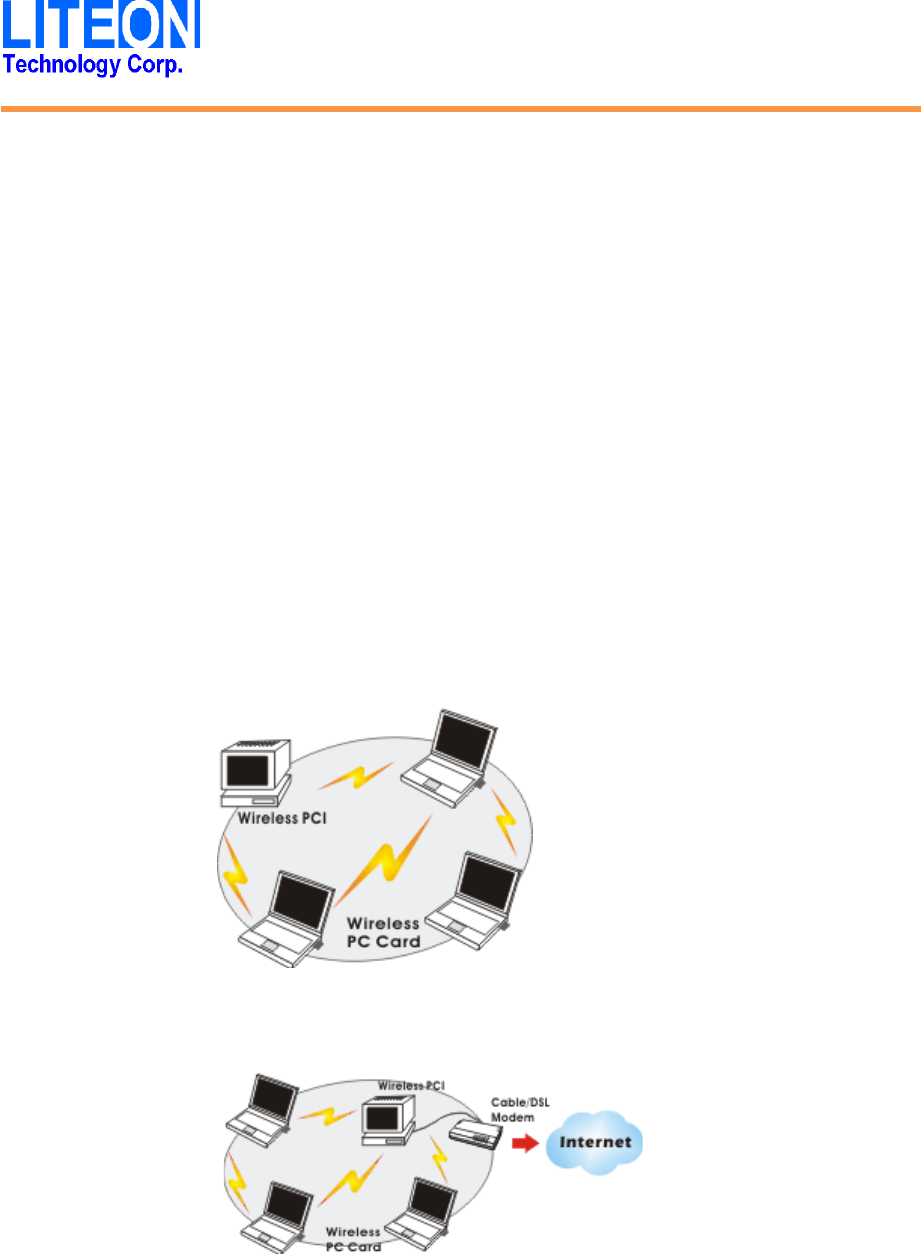
Kaysa Lee Page 5 3/17/2011
INTRODUCTION
The Broadcom 802.11n Wireless USB Adapter is a device that allows you connect your
computer to a wireless local area network (LAN). A wireless LAN allows your system to
use wireless Radio Frequency (RF) technology to transmit and receive data without
physically attaching to the network. The Wireless protocols that come with this product
ensure data security and isolation from interference generated by other radio frequencies.
This card also allows you to take full advantage of your computer’s mobility with
access to real-time information and online services anytime and anywhere. In addition,
this device eliminates the bother of pulling cable through walls and under furniture. It
even allows you to place your system in locations where cabling is impossible.
Modifying and augmenting networks has never been so easy.
Wireless Network Options
The Peer-to-Peer Network
This network installation lets you set a small wireless workgroup easily and
quickly. Equipped with wireless PC Cards or wireless PCI, you can share files
and printers between each PC and laptop.
You can also use one computer as an Internet Server to connect to a wired global
network and share files and information with other computers via a wireless LAN.
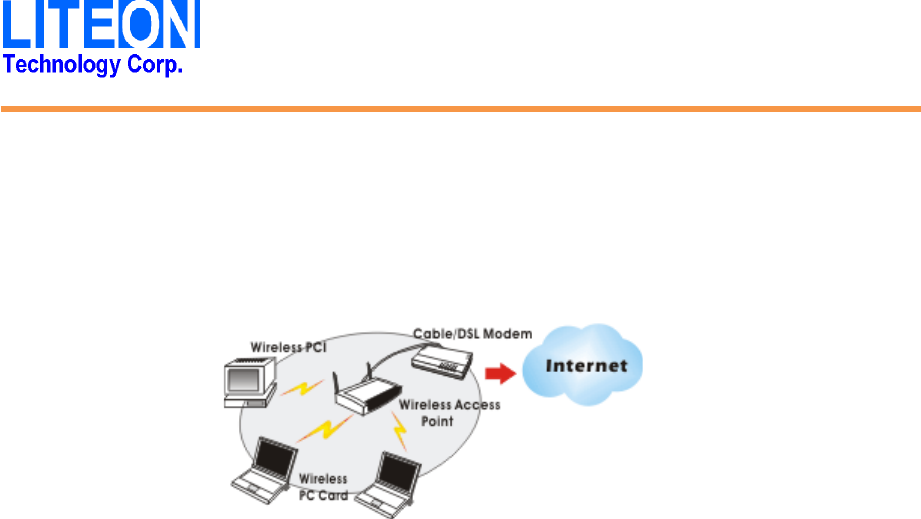
Kaysa Lee Page 6 3/17/2011
The Access Point Network
The network installation allows you to share files, printers, and Internet access
much more conveniently. With Wireless LAN Cards, you can connect wireless
LAN to a wired global network via an Access Point.
SOFTWARE INSTALLATION
Install the device
1. Make sure the computer is turned off. Remove the expansion slot cover from the
computer.
2. Carefully slide the Broadcom 802.11n Wireless USB Adapter with the USB
connector, Push evenly and slowly and ensure it is properly seated.
3. After the device has been connected to your computer, turn on your computer.
Windows will detect the new hardware and then automatically copy all of the files
needed for networking.

Kaysa Lee Page 7 3/17/2011
Install the Driver & Utility
1. Exit all Windows programs. Insert the included CD-ROM into your computer. The
CD-ROM will run automatically.
2. Manually install driver from Device Manager.
HARDWARE INSTALLATION
To verify if the device exists in your computer and is enabled, go to Start
Control Panel System (Hardware) Device Manager. Expand the
Network Adapters category. If the Broadcom 802.11n Wireless USB Adapter is listed
here, it means that your device is properly installed and enabled.
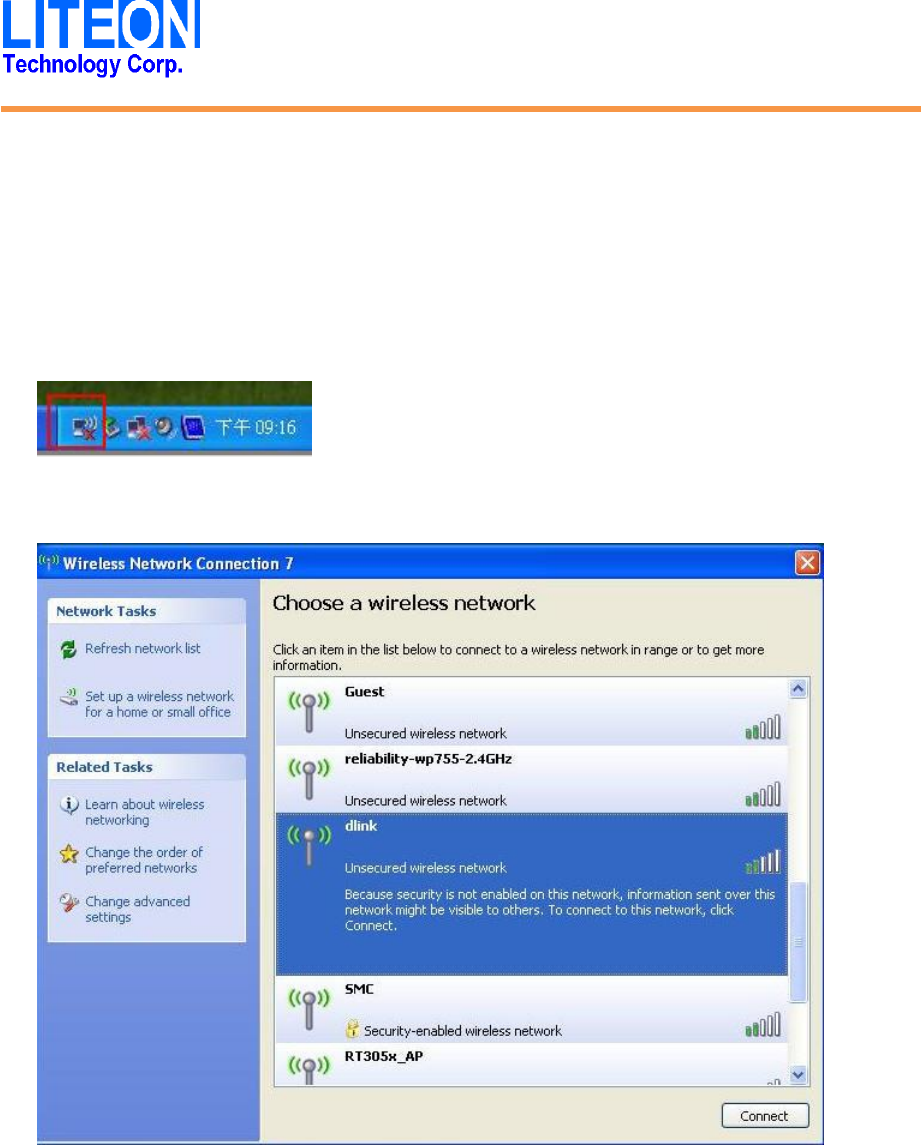
Kaysa Lee Page 8 3/17/2011
NETWORK CONNECTION
Once the device driver is well installed, a network setting described in the following
should be also established.
1. Click the Wireless icon to enable Windows Zero Configure.
2. Select the AP then click the Connect
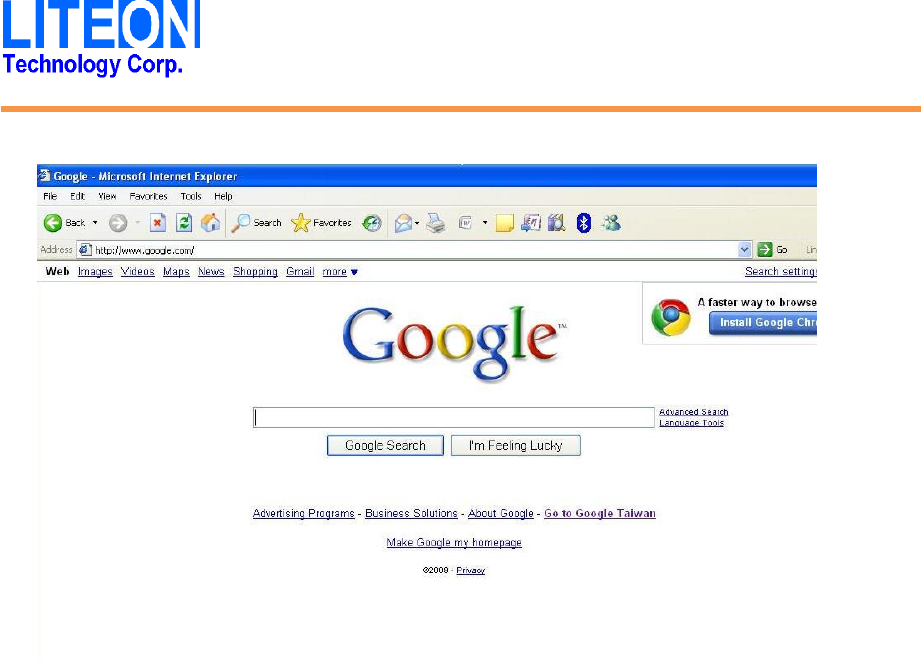
Kaysa Lee Page 9 3/17/2011
3. Surfing the Internet after completing connection.
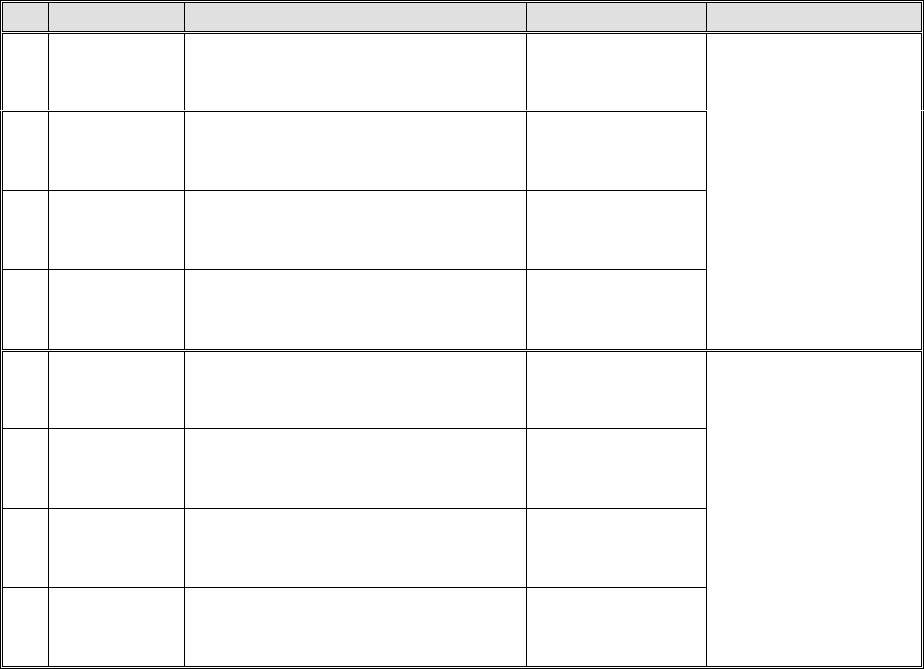
This device is operation in 5.15 – 5.25GHz frequency range, then restricted in indoor use
only.
This device is slave equipment, the device is not radar detection and not ad-hoc operation
in the DFS band.
FCC NOTICE: To comply with FCC part 15 rules in the United States, the system must
be professionally installed to ensure compliance with the Part 15 certification. It is the
responsibility of the operator and professional installer to ensure that only certified
systems are deployed in the United States. The use of the system in any other
combination (such as co-located antennas transmitting the same information) is
expressly forbidden.
Only the antennas listed below are allowed to be used with the EUT output power.
Antenna List
No.
Manufacturer
Part No.
Peak Gain
NOTE
1
AmTRAN
EDB-18S with metal reflector
2.5 dBi in 2.4GHz
4.5 dBi in 5.0GHz
with metal reflector
(Output power #1)
2
AmTRAN
EDB-45S with metal reflector
2.5 dBi in 2.4GHz
4.5 dBi in 5.0GHz
3
AmTRAN
MSA-3025-25GC4 with metal reflector
4.21 dBi in 2.4GHz
4.5 dBi in 5.0GHz
4
AmTRAN
FPA-3025-25GC4 with metal reflector
4.26 dBi in 2.4GHz
6 dBi in 5.0GHz
5
AmTRAN
EDB-18S
2 dBi in 2.4GHz
3 dBi in 5.0GHz
without metal reflector
(Output power #2)
6
AmTRAN
EDB-45S
2 dBi in 2.4GHz
3 dBi in 5.0GHz
7
AmTRAN
MSA-3025-25GC4
2.54 dBi in 2.4GHz
4 dBi in 5.0GHz
8
AmTRAN
FPA-3025-25GC4
2.75 dBi in 2.4GHz
4.5 dBi in 5.0GHz
NOTE:
1. There are two different EUT output power for with ground plane antenna and without ground plane
antenna.
2. About Output power, please refer to report: 113119R-RFUSP32V01、113119R-RFUSP32V01-A、
113119R-RFUSP42V01、113119R-RFUSP42V01-A